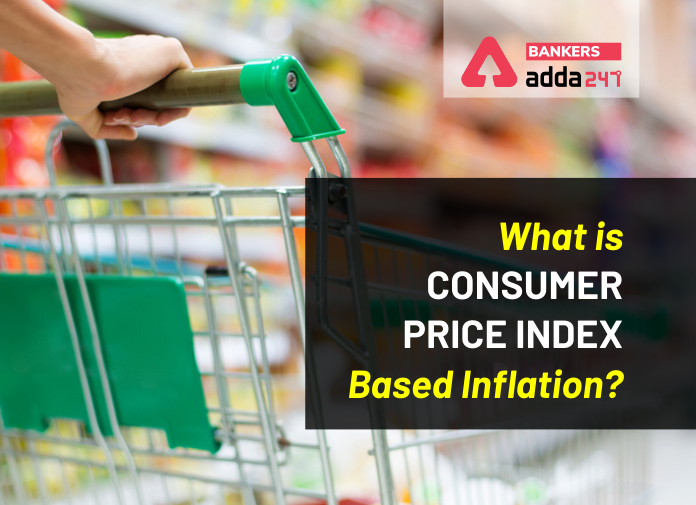Table of Contents
CPI Inflation 2020-21: Consumer Price Index is a comprehensive measure which is used to guess the estimate of price changes in goods and services which represent the consumption expenditure in an economy. It is commonly used to measure retail inflation in an economy.
Practice with,
The calculation of inflation using CPI is quite a rigorous procedure. Many different categories and subcategories of goods and services are used to classify items. Moreover, CPI also takes into account the basis of consumer categories, such as rural or urban. And then, based on the final data, the national statistical agencies release the overall index of price. Simply put, CPI gives us an idea of the cost of living.
| SEBI Grade A Vs. RBI Grade B | UPSC EPFO Salary | COVID-19 Curfew ePass | Types of Bank Cheques |
Consumer Price Index in India
In India, there are four different consumer price index numbers, which are:
- CPI for Agricultural Labourers (AL)
- CPI for Industrial Workers (IW)
- CPI for Rural Labourers (RL)
- CPI for Urban Non-Manual Employees (UNME)
The Ministry of Statistics and Program Implementation collects and compiles the data for CPI (UNME), while the Labour Bureau in the Ministry of Labour does the same for the other three.
Impacts of Consumer Price Index Based Inflation
Inflation is amongst the greatest threats to an economy. Some of its impacts are:
- It increases the cost of living of a person.
- If the rate of inflation is high, it affects the economy. When the goods cost more, the production of these goods becomes lesser. This can, in turn, result in the manufacturer laying off labourers and workers.
Also Read,
| How to face Govt Job Interview? | Can Clerk Become a Manager? | Essential Commodities Act | List of Exams Postponed |
RECENT CHANGES IN CPI INFLATION
The outlook for the country’s economy and the related situation has been greatly altered by the outbreak of the Coronavirus pandemic. As of now, the country’s growth depends entirely upon the duration, spread and intensity of the pandemic. It struck the country when the economy was on the verge of showing good recovery.
In its latest monetary policy report, the Reserve Bank of India stated that the CPI inflation, which remained elevated in the last few months, will most likely soften during the course of the financial year. The report suggests that inflation might tentatively experience ease from 4.8% in Q1 (2020-21) to 4.4% in Q2. However, there are stipulations that in the current situations, where there is high uncertainty in the economy, the aggregate demand may weaken more than the RBI has anticipated, thereby easing the core inflation even more.
Additionally, due to the current lockdown which the country is in, the compilation of CPI data by the National Statistical Office for the month of March 2020, along with the next few months, could prove to be very challenging. For the 2021-22 financial year, the current structural model of CPI inflation estimates indicates that this inflation could ease even further. With prices of food, and other things experiencing a fall, the Reserve Bank of India expects the inflation for the fiscal year 2021 falling down to between 3.6 to 3.8%.
Moreover, with COVID-19 spreading quickly to more than 200 countries around the globe, the global economy is looking at an impending recession in 2020, as compared to the 2.9% growth in the year prior.
Regardless, the impact of the pandemic on inflation, especially CPI inflation, is quite ambiguous. In saying so, the possible decline in the prices of food will likely be offset by other cost-push increases in the prices of non-food items because of the disruptions in the supply.
Click Here to Register for Bank Exams 2020 Preparation Material
Practice with,



 Daily Current Affairs 18th April 2025, I...
Daily Current Affairs 18th April 2025, I...
 Daily Current Affairs 17th April 2025, I...
Daily Current Affairs 17th April 2025, I...
 Daily Current Affairs 16th April 2025, I...
Daily Current Affairs 16th April 2025, I...


